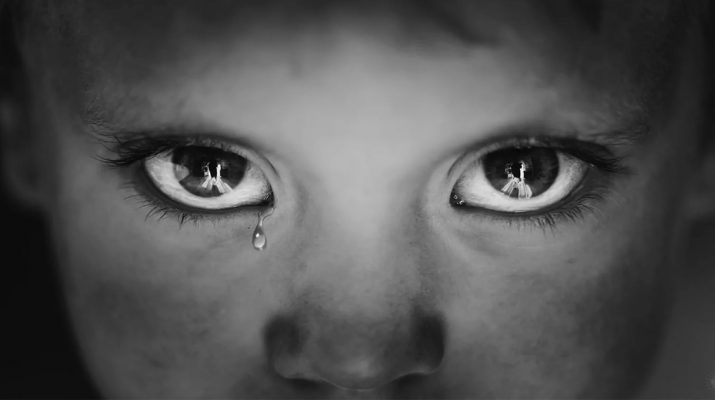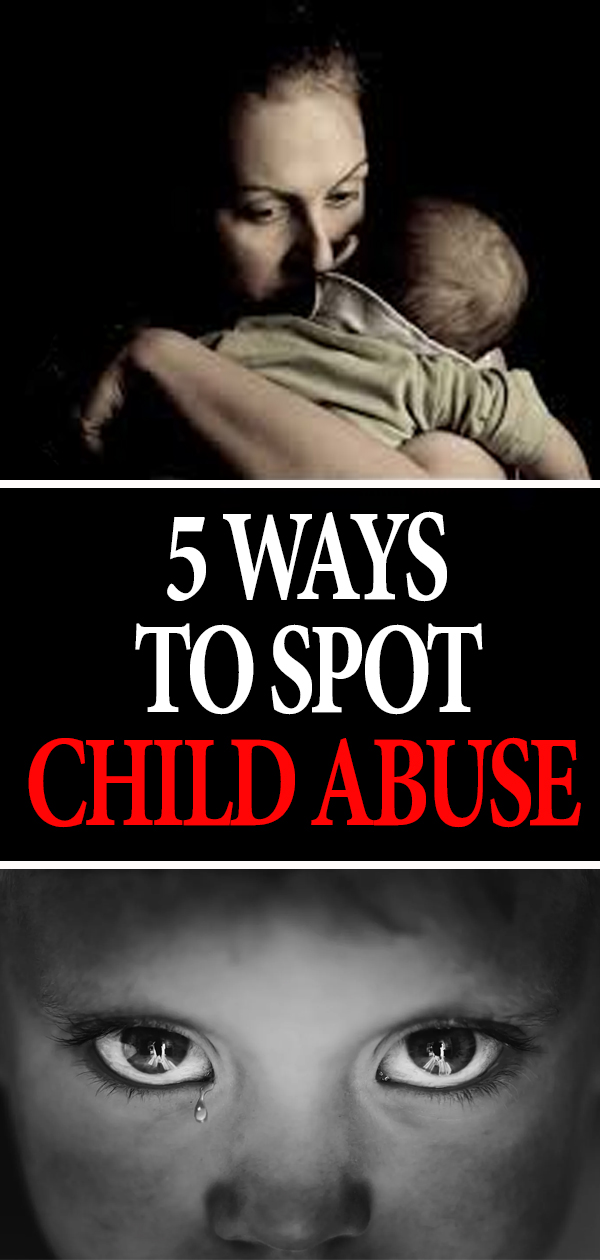Child abuse is a tragedy of the utmost magnitude. Indeed, the act of violence against children tears away innocence from a child’s heart and mind.
In fact, the problem is widespread. So we’re going to focus on ways that you can spot a child who is living this nightmare. Let’s start by defining what it is and the current state of this criminal act is in the world. Additionally, we’ll see how we can prevent these atrocious acts.
First, let’s define child abuse and then get into the numbers.
What Is Child Abuse?
Child abuse can an act of commission or omission. This act results from either direct participation or neglect. Unfortunately, most of these terrible cases involve either one or both parents or a caregiver.
Forms of violence against children include emotional abuse, exploitation, neglect, physical abuse, and sexual abuse.
Physical Abuse
Physical abuse involves any deliberate physical action that results in injury to a child. Examples of physical abuse include: biting, burning, choking, hair pulling, kicking, shoving, striking, throwing, or whipping.
Unfortunately, physical abuse may result in:
– blisters, bruises, burns, and cuts.
– broken bones.
– dislocated joints.
– emotional or psychological scarring.
– internal injuries.
– lifelong injury or death.
Over 28 percent of adults report that they experienced physical abuse as a child.
Sexual Abuse
Sexual abuse involves the use of a child for direct sexual exploitation by an adult. Moreover, children may also commit actions of child abuse. For example, they may use their age or physical strength as leverage against smaller children.
Types of sexual abuse include fondling, non-direct exploitation, oral sex, and penetrations. Additionally, they include child pornography, child prostitution, forced viewing of a sex act, inappropriate sexual communication.
Sexual abuse may result in:
– Acts of self-harm, including cutting, burning, or pulling out hair.
– Delinquent behaviors.
– Eating disorders such as anorexia.
– Excessive masturbation.
– Feelings of aggression.
– Psychological disorders, such as anxiety, depression, or suicidal ideations.
Twenty-one percent of adults report they experienced sexual abuse themselves.
Emotional Abuse
When a parent, caregiver, or another person harms a child’s emotional, mental, or social development, it’s emotional abuse. This method of abuse is often continuous. And the effects are usually gradual.
Acts of emotional abuse include attempts to corrupt, isolation, rejection or ignoring, shaming, and manipulation.
Emotional abuse may result in:
– bedwetting
– developmental delays
– disorders of speech
– health problems such as skin disorders or ulcers
– obesity and weight fluctuation
Approximately 11 percent of adults report being abused emotionally as a child.
Child Neglect
Child neglect involves continuous acts of omission. These include failing to provide the affection, care, supervision, and support necessary for a child to develop both mental and physical health and stability.
Acts of child neglect include educational neglect, emotional neglect, inadequate supervision, medical neglect, and physical neglect.
For example, let’s look at educational neglect. Of course, this term refers to allowing the child to miss excessive time from school. However, it can also include refusing necessary special education services and failing to enroll a child in school or a home-schooling program.
Child neglect may result in:
– psychological conditions such as anxiety and depression
– sleeping difficulties, including insomnia
– stunting of physical development (height and weight, especially)
– undiagnosed and untreated medical conditions
– not being immunized
Child Abuse: The Numbers
“Every year, more than 3 million reports of child abuse are made in the United States.” ~ Childhelp (source)
Indeed, child abuse is an epidemic. The definition of an epidemic is “a widespread occurrence of an infectious disease in a community at a particular time.” And make no mistake: child abuse is an infectious disease. One that stains the very fabric of our society.
So, while we are in definition mode, let’s define infectious: “likely to be transmitted to people, organisms, etc., through the environment.” It’s a known fact that victims of child abuse are much more likely to become abusers themselves.
Also, note that there is a flip side to the above statement. Some victims of child abuse go on to become passionate and influential advocates of anti-abuse movements. Therefore, our society is greatly indebted to these people.
So there isn’t any statistic that could accurately reflect the cumulative damage – on a societal or individual level – that child abuse inflicts. However, the numbers are somewhat helpful in understanding just how pervasive a problem it is.
Per The American Society For The Positive Care Of Children (American Spcc):
– 4.1 million reports of child abuse in 2017. These reports include a total of 7.5 million children.
– 75 percent of child victims experienced neglect.
– Nearly 40 percent were physically abused, sexually abused, or psychologically mistreated.
– 25.3 percent of child abuse victims were under the age of 1.
– 1,720 children died from child abuse in 2017. The actual number may be 50-60 percent higher.
– 5 children die every day from child abuse.
– 72 percent of child abuse deaths were children under the age of 3 years.
The consequences of child abuse:
– Abused teens are more likely to engage in risky sexual behaviors. As a result, this puts them at risk of STDs.
– 80 percent of child abuse victims meet the criteria for at least one psychological disorder.
– Abused children are 25 percent more likely to become pregnant during their teenage years.
– The estimated financial cost of child abuse and neglect in the United States: $585 billion.
5 Ways To Spot Child Abuse
The first step in being able to help an abused child is to know the signs of child abuse. Because the problem is so large, know the five ways to spot child abuse.
-
The Child Shows Signs Of Neglect
Three out of every four abused children show apparent signs of neglect. These signs include:
– Noxious body odor and/or wearing dirty clothes.
– Continuous medical problems that go unresolved.
– Learning problems that aren’t attributed to any specific psychological or physical cause.
– Chronic absence or truancy from school.
-
Reluctance To Leave The Side Of A Trusted Adult
Children who are abused often refuse to leave the presence of a trusted adult. And these adults include teachers, coaches, counselors, or someone with whom the child has a close relationship.
Therefore, if a child is reluctant to leave your side, offer your comfort. And encourage them to open up about anything that may be bothering them. Don’t imply anything. Finally, remind the child that the conversation is private and that it’s okay.
-
The Child Is On-Edge With Adults For Seemingly No Reason
This sign is most evident in younger children as they lack enough life experience that tells them that most adults are safe. Children who always seems on-edge with adults may be abuse victims.
Once again, do not imply anything. Be observant. If the child continues to display this behavior, casually ask if there’s something they’d like to discuss.
-
The Child Engages In Risky Behaviors
Abused children often display erratic and inappropriate behavior. As a result, the child will participate in acts that put their safety and life in danger. The most frequent risky behaviors exhibited by these young victims are abusing others and sexual activity.
So what if you are concerned and want to approach the child? Here’s what to do. Because they may suspect adults, do not imply anything. Be observant. Finally, if the child continues to display this behavior, casually ask if there’s something they’d like to discuss.
-
The Child Displays Underdevelopment
Sadly, the entire situation often stunts a child’s emotional, social, and intellectual development. These children are more likely to disengage from classroom activities and isolate themselves from their peers. Thus, they shut themselves off from potentially positive social interactions.
If the child continues to display this behavior, casually ask if there’s something they’d like to discuss.
Final Thoughts: Be Part Of The Solution
“In approximately 18 States and Puerto Rico, any person who suspects child abuse or neglect is required to report. The other three States—Indiana, New Jersey, and Wyoming—require all persons to report without specifying any professions. In all other states, territories, and the District of Columbia, any person is permitted to report.”
~ Child Welfare Information Gateway (source)
Preventing and rectifying possible acts of crimes against children should be the responsibility of every capable adult. Therefore, having an “Out of sight, out of mind” attitude about an innocent child who is suffering should not be an option. The fact that less than half have a legislative mandate in this regard is, to put it lightly, disturbing.
So, consider it a personal responsibility and the right thing to do.
If you see any signs of abuse in someone you know, or you’re a victim, seek professional assistance.
There’s a 24/7 National Child Abuse Hotline called Childhelp. A qualified representative will assist you with resources to aid in every abusive situation. Finally, all calls are confidential. So feel free to call 1-800-4-A-CHILD (1-800-422-4453) for help.


